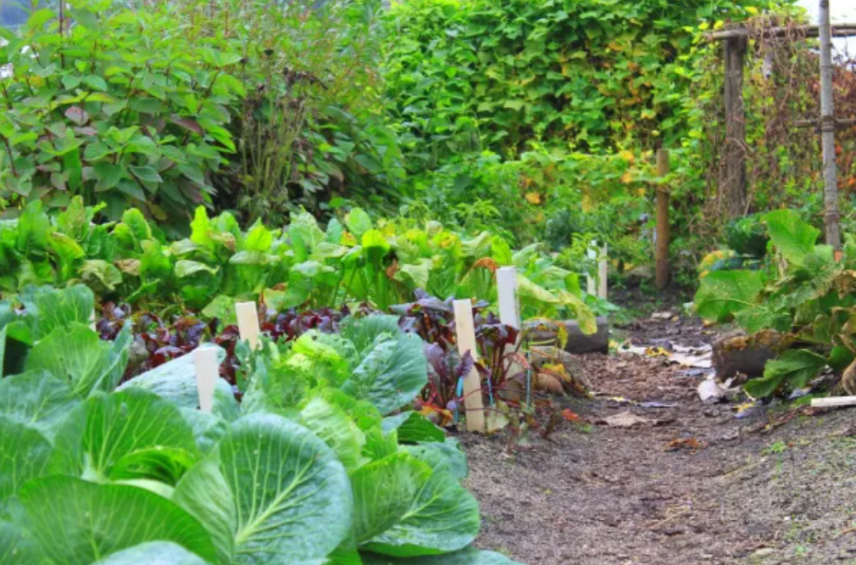How to Reduce Food Waste During the Pandemic
89 percent of American households reported changes in shopping habits in April as a result of the COVID-19 pandemic. Since then, signs like this one at Pick n’ Save in Middleton reserve parking spots for curbside grocery pickup, one of the ways grocery shopping has altered for many consumers.
November 22, 2020
As coronavirus cases rise in Wisconsin and Dane County, many people are again trying to cut back on trips outside of the house, even the necessary ones like going to the grocery store.
Since the beginning of the COVID-19 pandemic, reducing trips to the grocery store has become a health strategy for many, alongside wearing a mask and maintaining social distance from other shoppers while inside the store. Grocery stores have also experienced dramatic increases in curbside pickup orders where shoppers aren’t going into the store themselves but have groceries delivered to their car. Online ordering services such as Thrive Market and Amazon Fresh have increased in popularity as well.
Food purchasing habits have changed for consumers this year, and in turn, so has the way food is wasted.
According to a paper published by the National Center for Biotechnology Information (NCBI), which functions under the National Institutes of Health, 31-40 percent of food harvested in the United States is wasted. Billions of pounds of food waste occur at the consumer level, where the top two reasons to throw food out are worries of foodborne illness and the desire to “eat only the freshest food,” according to 2014 survey results published by the NCBI.
This year, changing shopping habits and spending more time at home have an impact on how food is used. According to the scientific article “The Impact of COVID-19 on Consumer Food Waste,” “In early April of 2020, 50 percent of consumers reported shopping less in person than compared with the pre‐COVID period, with 37 percent purchasing more at each visit, 16 percent reporting initiation of grocery delivery services, and 13 percent reporting an increase in the frequency of grocery deliveries.” Experts have analyzed many of these changes in purchasing patterns and have found that many can lead to an increase in food waste.
Reducing food waste, which releases large amounts of the greenhouse gas methane, is crucial to saving the environment. It also has an added benefit of helping consumer wallets, which spend roughly 9 percent of their grocery bill on food that is wasted. The main barrier to food waste reduction is consumer behavior, which has already changed drastically this year. Though some of these changes can be negative, if implemented correctly, many habits to reduce possible COVID-19 exposure can also reduce food waste. There are a few ways to do this.
Plan Grocery Store Trips
More consumers are being intentional about grocery store visits in an effort to avoid unnecessary coronavirus exposure, but without proper planning, going on fewer shopping trips has been shown to cause more food waste.
Limiting trips to the grocery store should involve coming up with a fairly comprehensive shopping list. Planning meals and necessary foods in advance of shopping is recommended in “The Food Waste and Recovery Guide for Madison and Dane County”, which also advises “putting a paper list or whiteboard on your fridge… to keep track of its contents.” Quite simply, buying what you plan to cook increases the likelihood that food gets eaten.
It is also important for consumers to avoid over-purchasing even in the uncertainty of the coronavirus, and sticking to a list is one of the easiest ways to avoid this.
Avoid Panic Buying
Panic buying has been an issue during the rollercoaster of COVID scares this year, but the behavior can lead to increased waste. An analysis of the 2014 NCBI survey cited buying food in bulk as a cause for increased consumer food waste. Stocking up on large amounts of products in a panic can have similar effects.
Get Creative as a Cook
Because of periodically empty shelves or unfamiliar substitutions for the foods consumers order online or for pickup, sometimes consumers are left without choices. They may not receive all the items on their grocery list if they order curbside. Even if consumers shop the aisles themselves, they might be forced to buy a different product or brand than usual as panic buying empties shelves.
Unfortunately, being unfamiliar with ingredients is a factor that often leads to food waste. But as many desire to delay shopping trips as long as possible, now is a great time to learn how to get creative with the recipes you are familiar with and extend the life of your grocery haul. There are many ways to adapt recipes to the foods you have in your fridge and pantry, especially produce.
Being able to cook the food that is available at home is crucial when leaving the house isn’t an option. Most foods can be prepared in a variety of ways, so consumers should fill their shopping list with foods that they are comfortable with making into different dishes.
Being versatile in your cooking gets the most out of food, and minimizes trips to the grocery store and the garbage can.
Now is a great opportunity to create habits that reduce food waste, and the current circumstances have helped consumers to make many of these changes already. By shopping intentionally and finding ways to improve the efficiency of food while cooking at home, consumers can see the short-term benefits of reducing trips to crowded stores during a pandemic and develop sustainable habits that will benefit the environment and consumers’ finances.














